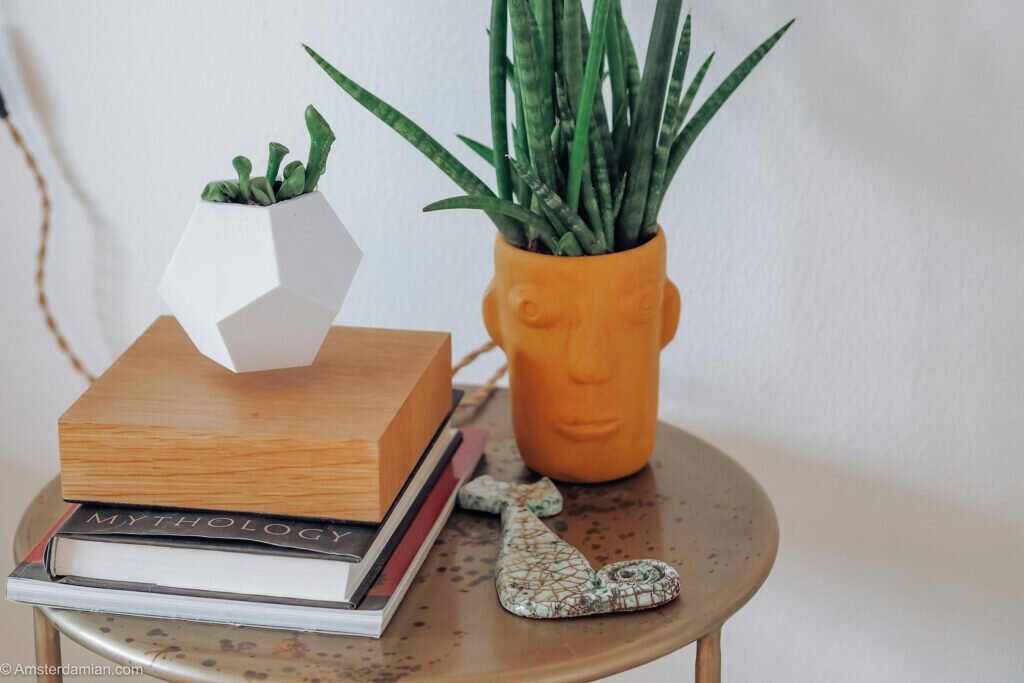Reset days are something I have implemented in my life for over a year, after I discovered this concept by watching Muchelleb’s videos. She didn’t invent this concept. There are others who talk about it and each add their own unique take on it, but I like her approach so I took her as a “mentor”. We all do these reset days in some form or another, without even calling them that. But a bit of diving into the “science” of a reset day and using all of its potential won’t hurt, right?
Life is crazy, everyone agrees on that. We’re always busy, our minds are constantly trying to juggle the thousands of tasks and thoughts that run around daily inside our head. Work and personal life require a lot of planning, tracking, scheduling and making appointments. It’s no wander that when we put our heads on the pillow we are inundated with thoughts about what we have to do, what we should have done, or what we would like to do. It is overwhelming.
That’s why, from time to time we should hit a reset button: take a day to put things in order and organise our tasks, our thoughts, our life. I loved this concept from the moment I heard about it! As a highly sensitive person, I get overwhelmed by daily life more easily than others. Most of the time I am involved in many projects and keeping up with everything makes me end up close to burnout, often. I had to learn how to organise and prioritise my life after getting through burnout and a post-viral fatigue, but with the reset day I take this a step further.
Also, for people who are control freaks, the reset days are a miracle! They can feel they have more control over their life by regularly doing this, therefore having less anxiety and stress. Only watching the videos about this habit makes me somehow relaxed and satisfied: like watching people cleaning, watching people organising their lives is a delight for me (and many others, judging by the numbers of views that full-house cleaning and reset day videos get on YouTube!).

What a reset day is not
What I mean by a reset day is not a day when you will change your habits over night, change your life completely and start over, or any crazy ideas like that. No one can do that. A reset day is a day when you put your thoughts and surroundings in order, so you can start your next week having a clear idea in mind of what you want to do. It’s a day whose main purpose is to make you feel less stressed and tired. And it doesn’t have to be a full day, a few hours every Sunday will do.
How do you do a reset day?
Reset days can be random days throughout the year when you take the full day to “refresh” everything, or can be a set day every month or every week. Some people prefer to take a day off to do this, others use the weekend. People with kids might need to plan their reset day on a day when the kids are not at home, so they can have the full attention on the task. The reset day routine is something that you will perfect in time; you have to try to discover what works best for you.
Sundays are my reset days. I prefer mini-resets every week, instead of a big one here and there. I might skip it one week, but that’s fine, no one gets hurt and I don’t beat myself up for that.
Reset day routine
1. Cleaning the house thoroughly. You might or might not want to include this in your reset day, as it can take up a lot of time and leave you with less energy for the rest. Every second week I like to do a deep cleaning of the house as part of my reset day. The cleaning includes some decluttering as well, because there are always things that pile up in the house and they don’t belong there.
I have a small house so I can include this task in my routine, but if your house requires more than one hour cleaning, then use only one hour and do whatever you can in that time. You will have the rest of your week to do the deep cleaning, and you will still start the reset day with a tidy house.
2. Do a brain dump. This is my absolute favourite! If you don’t have the time to do a full reset day, do only this step and it will do the job for you! Take a notebook or keep a file on your computer/phone for the brain dumping sessions. Write all the things that are on your mind — and I mean everything! A brain dump is the solution for stopping the never ending loops in your mind, all the things you want to do at some point but never get to them, all the ones you’re trying not to forget about, etc. And they are many!
- write down all the tasks that need to be done in the near or far future (the ultimate to-do list)
- write all the not-so-important things that are on your mind; it’s better to have them put on paper than let them clog your brain
- write all the questions you have (things you want to think about but haven’t got the time yet): “should I do Botox in a few years? Do I want to plant vegetables next year? How many kids does the royal family have? ” — you get the idea.
As a rule, every week you should write about everything that is on your mind, even if you wrote about the same things last week and the week before. After doing this, you will suddenly feel less stressed, because you can see everything on paper and it won’t be so scary anymore. I tried to keep one list that I was updating every week but that didn’t work so well. I noticed that it’s much better when I do a fresh list every time.
3. Tackle all the minor tasks from your list that can be done in the next one or two hours and get rid of them! Things like: scheduling appointments, doing your bills, calling someone, watering plants, watching a video or reading an article you’ve been meaning to read for a long time. This is the best time to get rid of those small, annoying tasks occupying undeserved space on your mind.
Plan your next week in your calendar, if you are a person who does that regularly, or at least have a clear image of the things that you want to do in the next week and what you will postpone.

4. Review your goals. If you are a super organised, goal-setting person and you have goals set for a quarter or half a year, review them, see where you stand, assess the progress you’ve made, think about what can you do next to achieve the goals. Dedicate as much time as you feel fit to this task.
5. Organise your digital space. The most dreaded task for me, which never feels completed, but I do my best to organise it as much as possible every time. If you’re doing this for the first time, you might want to have a full day dedicated to this task; a day when you will organise everything, create folders, move files to those folders etc. This way, next time you do it, it will be much easier. This is a tedious activity so you need to find some motivation to go through it (eat a pizza at the end of it or something). You can find a video for a full digital space reset here.
- Emails. I have multiple addresses and I like to go through all of them. Read all the unread emails, answer the ones you can answer, mark the ones that will need to be tackled later, put the emails that you need to keep in the corresponding folders. Take the time to unsubscribe to any of the things that are just clogging your inbox and you don’t need.
- Pictures and videos. Copy the pictures and videos from your phone to the laptop or wherever you store them. Delete everything that doesn’t need to be on your phone, or at least a part of it. If you are a photographer or videographer, organise your folders, delete what you won’t keep and do the back-ups.
- Back-up your laptop and other devices. Delete any apps that you don’t use anymore. Charge everything.
- Clear your desktop: we all have those files that we saved on the desktop, because of laziness or other reasons. Move them where they need to be and clear your desktop.
- If you feel very brave, have a look at the bookmarks in your browser. What should you still keep there and what needs to go away? Be careful with this, as it might distract your attention and you’ll end up watching cute otters videos for the rest of your day!

6. Organise your physical space. Take all the papers that are lying around and put them in their place. Take this opportunity to go through them and keep only what’s necessary, if any. If you have any household items that you need to organise, this is the moment (move that armchair, put the kid’s toys in a bigger box, clean the vacuum cleaner, repot plants etc).
7. Relax and pamper yourself. At this point you might be exhausted, after everything you’ve done, so a bit of pampering is in order. Having cleared your mind for the day, relaxation will come easier. Have a bath, exfoliate, put a mask on (or treat your beard, if you are a guy), do your manicure, or whatever is the ultimate pampering for you. You could also go to a salon for a sauna or/and massage or do some binging from the couch.
These are my guidelines for the reset day and I think they can be applied by everyone. I didn’t get into much detail, because my details might differ from yours. If you want to try the reset days, you can follow these and in time you will find a routine that works for you. The time you assign to every step might change from week to week, according to your needs. You can read more about the subject or watch Muchelleb for more ideas for the reset day routine. Nothing is fixed, change the process as you need, to serve you better, and don’t forget to assess its results from time to time, to see if your life is better because of it.
—————————————————————–
Stay tuned for more and follow Amsterdamian on Instagram and Facebook for daily stories about life in the Netherlands. Please share this post if you liked it!
Check out my photo book: Amsterdam Through the Seasons!















